The polygons are flat and closed figures formed by line segments. The word “polygon” comes from the Greek and constitutes the union of two terms ” poly ” and ” gon ” which means “many angles”.
Polygons can be simple or complex. Simple polygons are those whose consecutive segments that form them are not collinear, do not cross and touch only at the ends.
When there is an intersection between two non-consecutive sides, the polygon is called a complex.
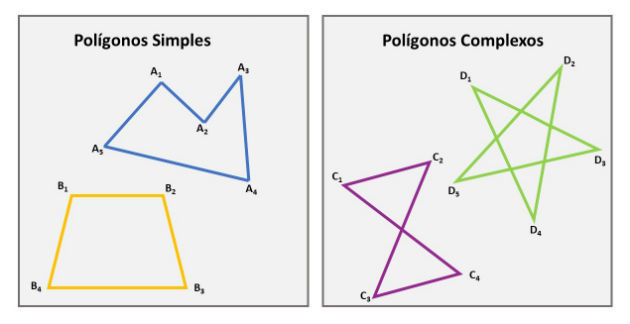
Convex and concave polygon
The junction of the lines that form the sides of a polygon with its interior is called the polygonal region. This region can be convex or concave.
Simple polygons are called convex when any line that joins two points, belonging to the polygonal region, will be fully inserted in this region. In the concave polygons, this does not happen.

Regular polygons
When a polygon has all sides congruent with each other, that is, they have the same measure, it is called an equilateral. When all angles have the same measure, it is called an equi-angle.
Convex polygons are regular when they have congruent sides and angles, that is, they are both equilateral and equi-angles. For example, the square is a regular polygon.

Elements of the Polygon
- Vertex : corresponds to the meeting point of the segments that form the polygon.
- Side : corresponds to each line segment that joins consecutive vertices.
- Angles : the internal angles correspond to the angles formed by two consecutive sides. On the other hand, the external angles are the angles formed by one side and by the extension of the side following it.
- Diagonal : corresponds to the line segment that connects two non-consecutive vertices, that is, a line segment that passes through the interior of the figure.
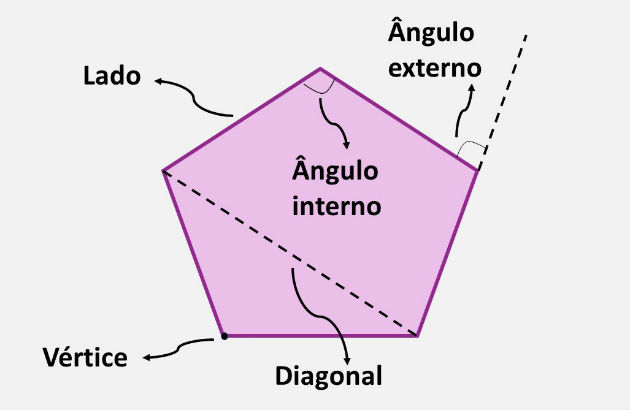
Polygon Nomenclature
Depending on the number of sides present, the polygons are classified into:
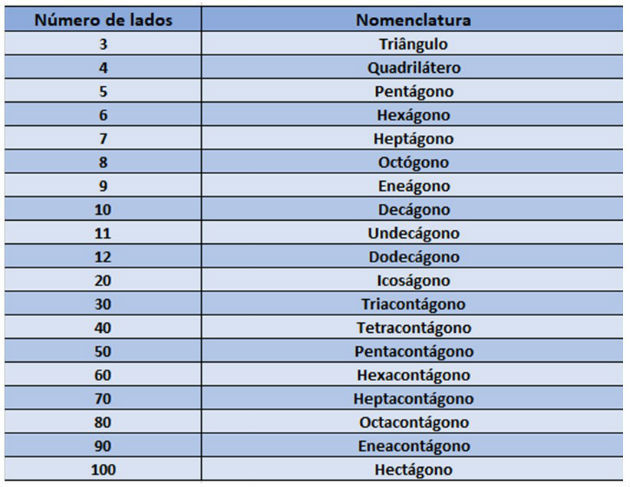
Sum of the angles of a polygon
The sum of the external angles of the convex polygons is always equal to 3 60º . However, to obtain the sum of the internal angles of a polygon it is necessary to apply the following formula:

Being:
n : number of sides. of the polygon
Example
What is the sum of the internal angles of a convex icosagon?
Solution
The convex icosagon is a polygon that has 20 sides, that is n = 20. Applying this value in the formula, we have:

Thus, the sum of the internal angles of the icosagon is equal to 3240º.
Number of diagonals
To calculate the number of diagonals of a polygon, use the following formula:

Example
How many diagonals does a convex octagon have?
Solution
Considering that the octagon has 8 sides, applying the formula, we have:

Therefore, a convex octagon contains 20 diagonals.
In the table below, we have the value of the sum of the internal angles and the number of diagonals of the convex polygons according to the number of sides:
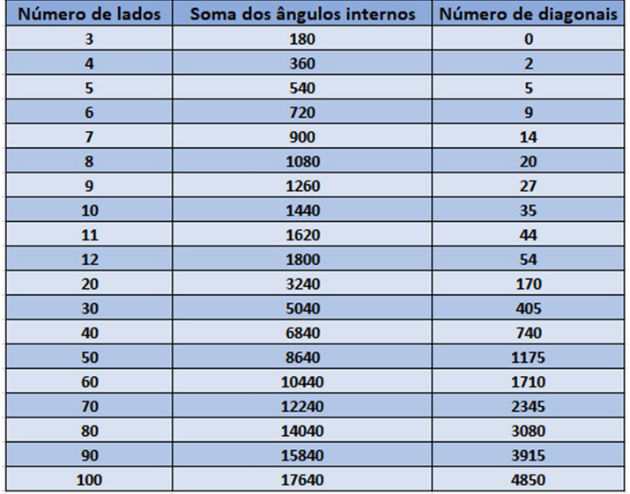
Perimeter and area of polygons
The perimeter is the sum of the measurements from all sides of a figure. Thus, to know the perimeter of a polygon, just add the measurements of the sides that compose it.
The area is defined as the measurement of its surface. To find the area value of a polygon, we use formulas according to the type of polygon.
For example, the area of the rectangle is found by multiplying the width measurement by the length.
The area of the triangle is equal to the multiplication of the base by height and the result is divided by 2.
Polygon area formula from perimeter
When we know the perimeter value of a regular polygon, we can use the following formula to calculate its area:

Being:
p : semiperimeter (the measurement of the perimeter divided by 2).
a : apótema

Solved Exercises
1) CEFET / RJ – 2016
The backyard of Manoel’s house is formed by five squares ABKL, BCDE, BEHK, HIJK and EFGH, of equal area and has the shape of the figure on the side. If BG = 20 m, then the yard area is:
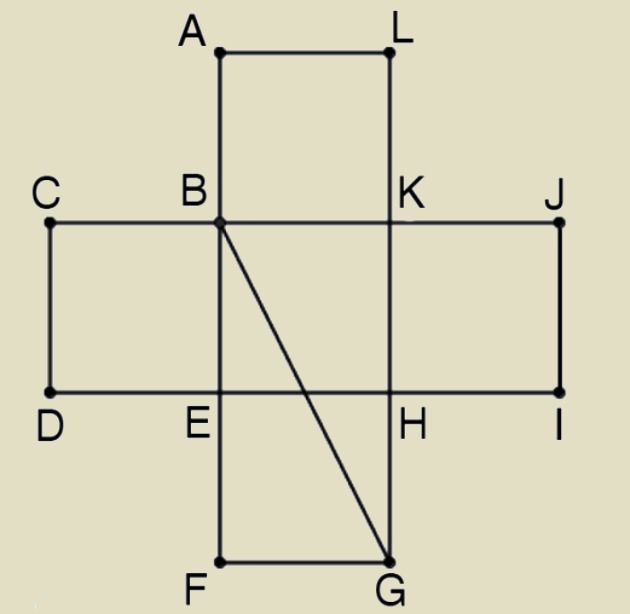
a) 20 m 2
b) 30 m 2
c) 40 m 2
d) 50 m 2
Answer
The BG segment corresponds to the diagonal of the BFGK rectangle. This diagonal divides the rectangle into two right triangles, equal to its hypotenuse.
Calling the FG side of x, we have that the BF side will be equal to 2x. Applying the Pythagorean theorem, we have:

This value is the measurement of the side of each square that forms the figure. Thus, the area of each square will be equal to:
A = l 2
A = 2 2 = 4 m 2
As there are 5 squares, the total area of the figure will be equal to:
A T = 5. 4 = 20 m 2
Alternative: a) 20 m 2
2) Faetec / RJ – 2015
A regular polygon whose perimeter measures 30 cm has n sides, each measuring (n – 1) cm. This polygon is classified as one:
a) triangle
b) square
c) hexagon
d) heptagon
e) pentagon
Answer
Since the polygon is regular, then its sides are congruent, that is, they have the same measure. Since the perimeter is the sum of all sides of a polygon, then we have the following expression:
P = n. L
Since the measurement on each side is equal to (n – 1), then the expression becomes:
30 = n. (n -1)
30 = n 2 – n
n 2 – n -30 = 0
We are going to calculate this 2nd degree equation using the Bhaskara formula. Thus, we have:

The side measurement must be a positive value, so we will disregard the -5, therefore n = 6. The polygon that has 6 sides is called a hexagon.
Alternative: c) hexagon
